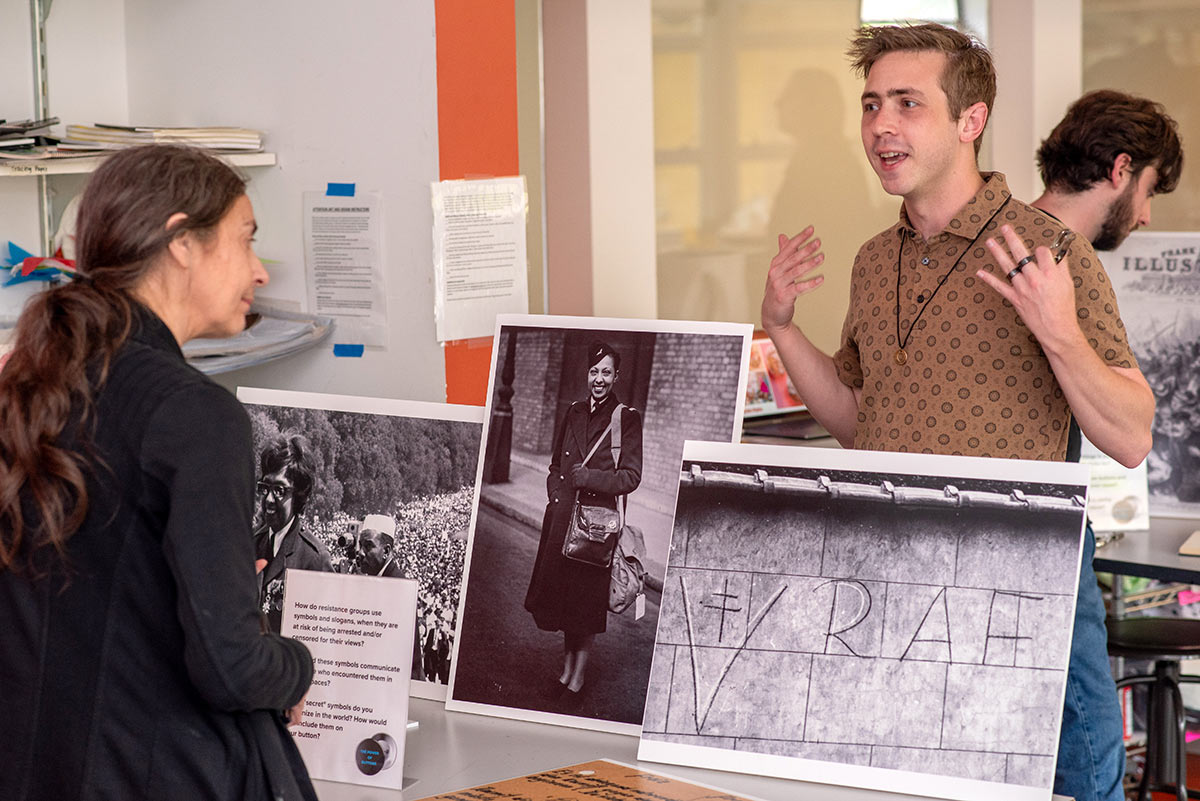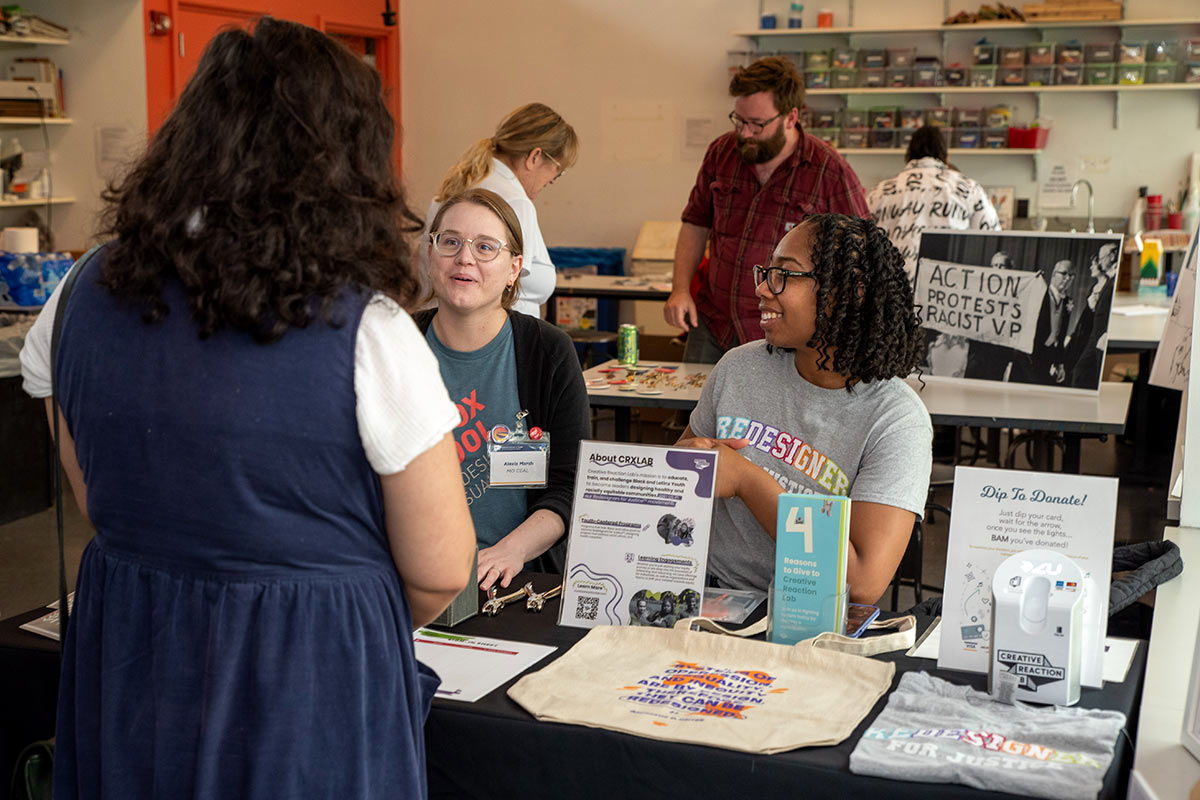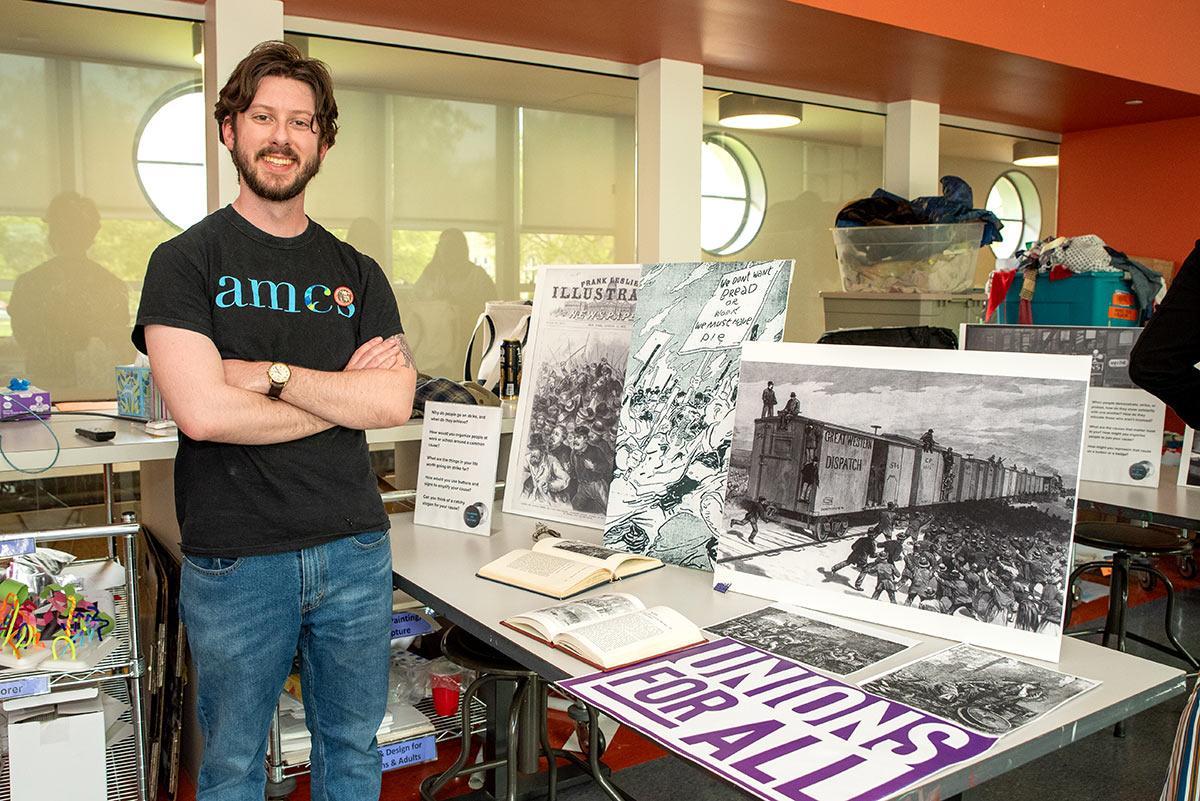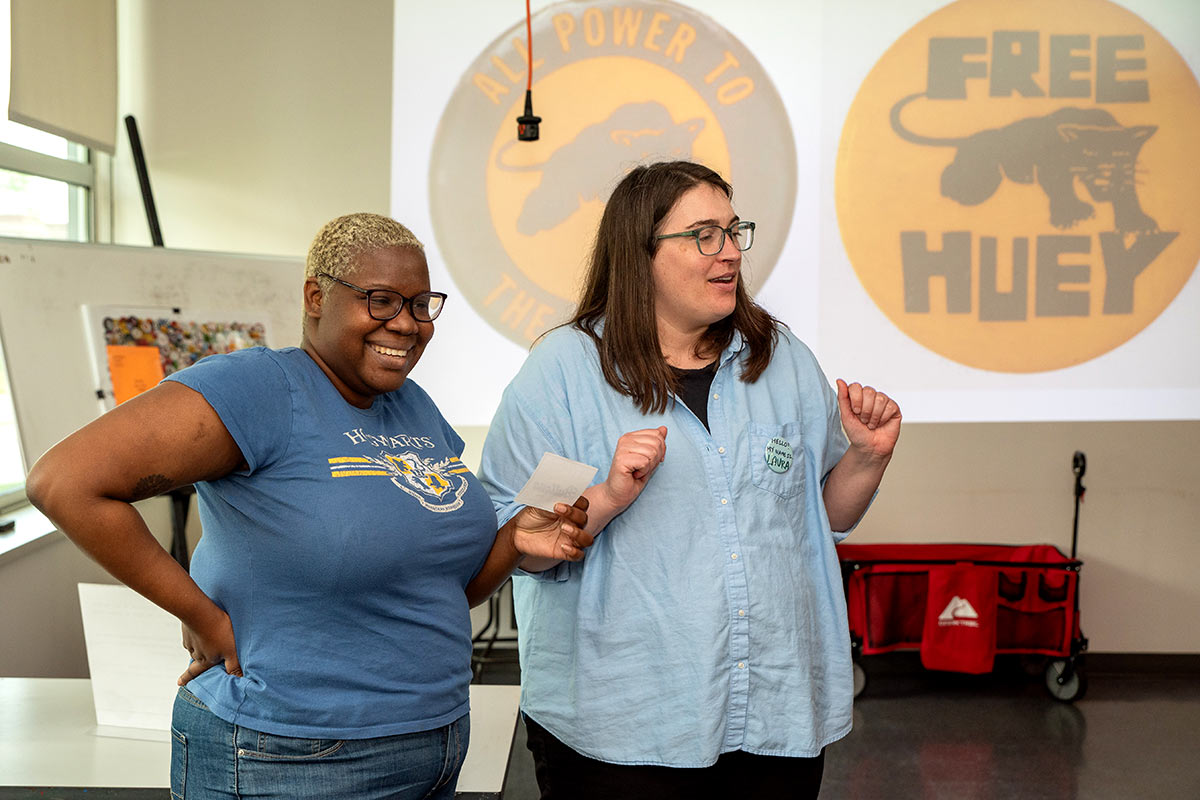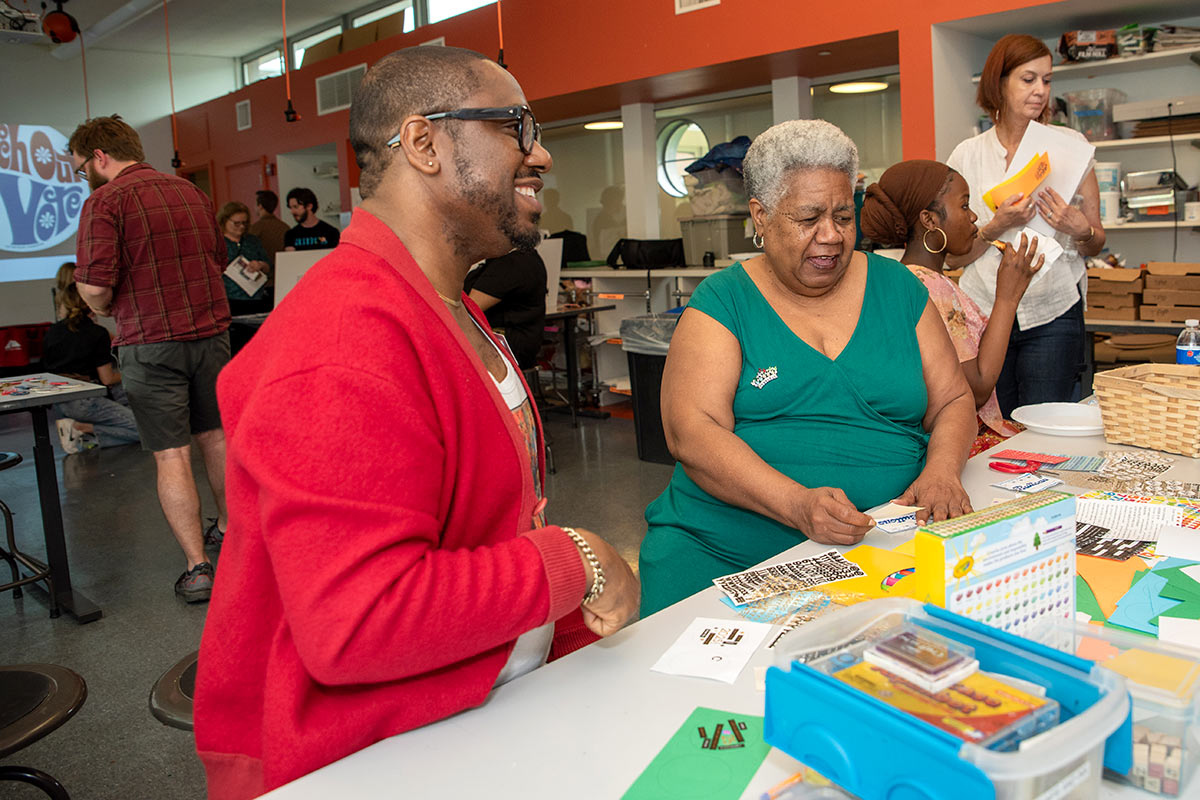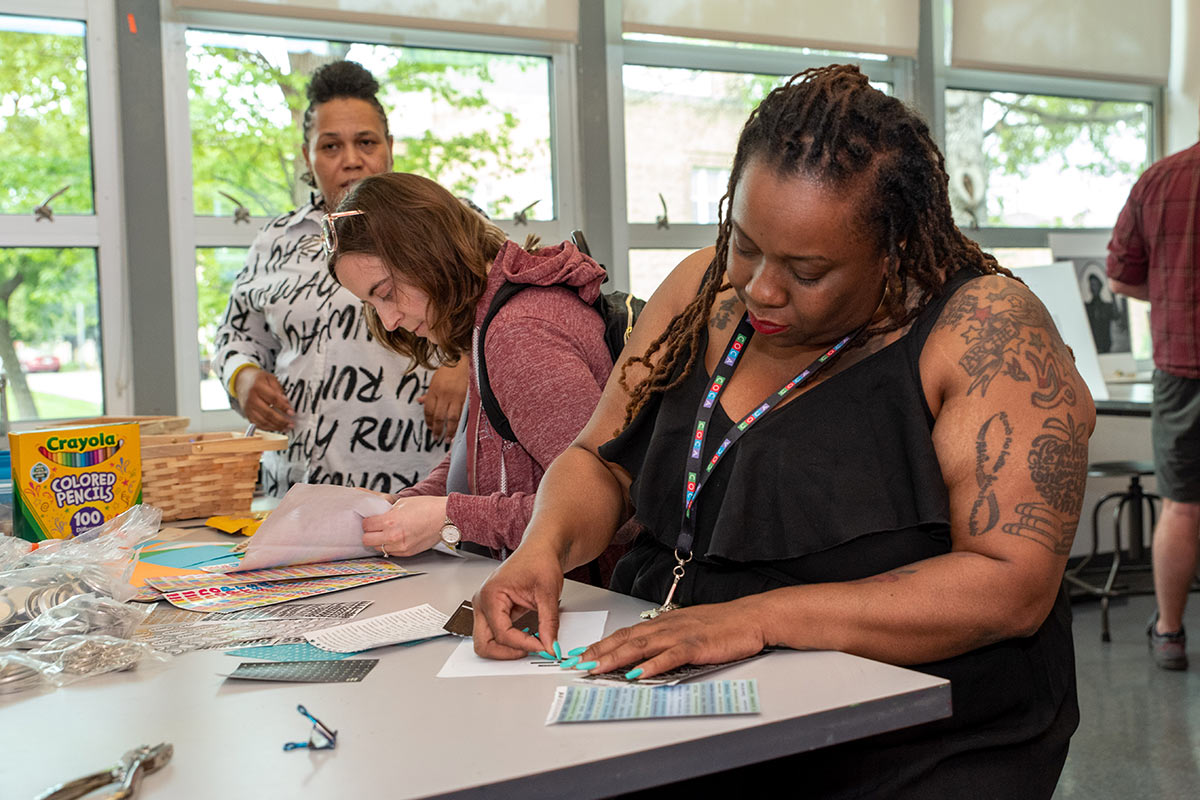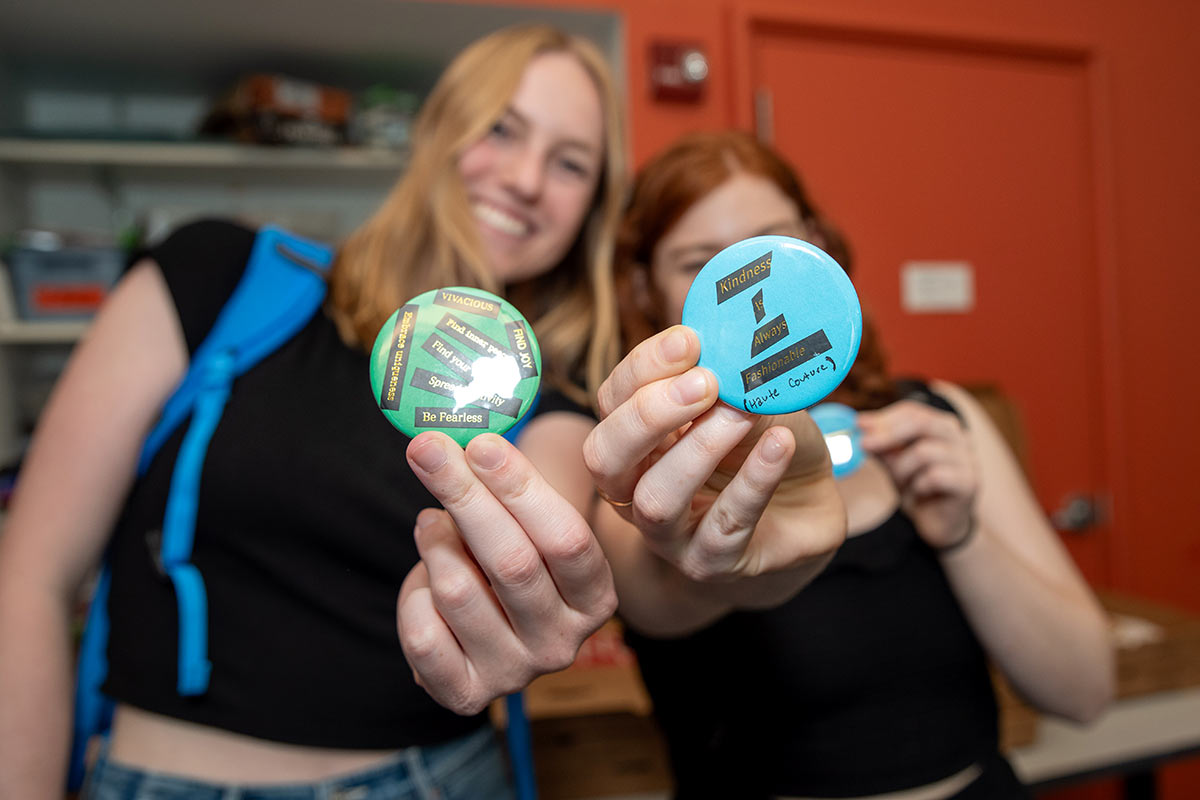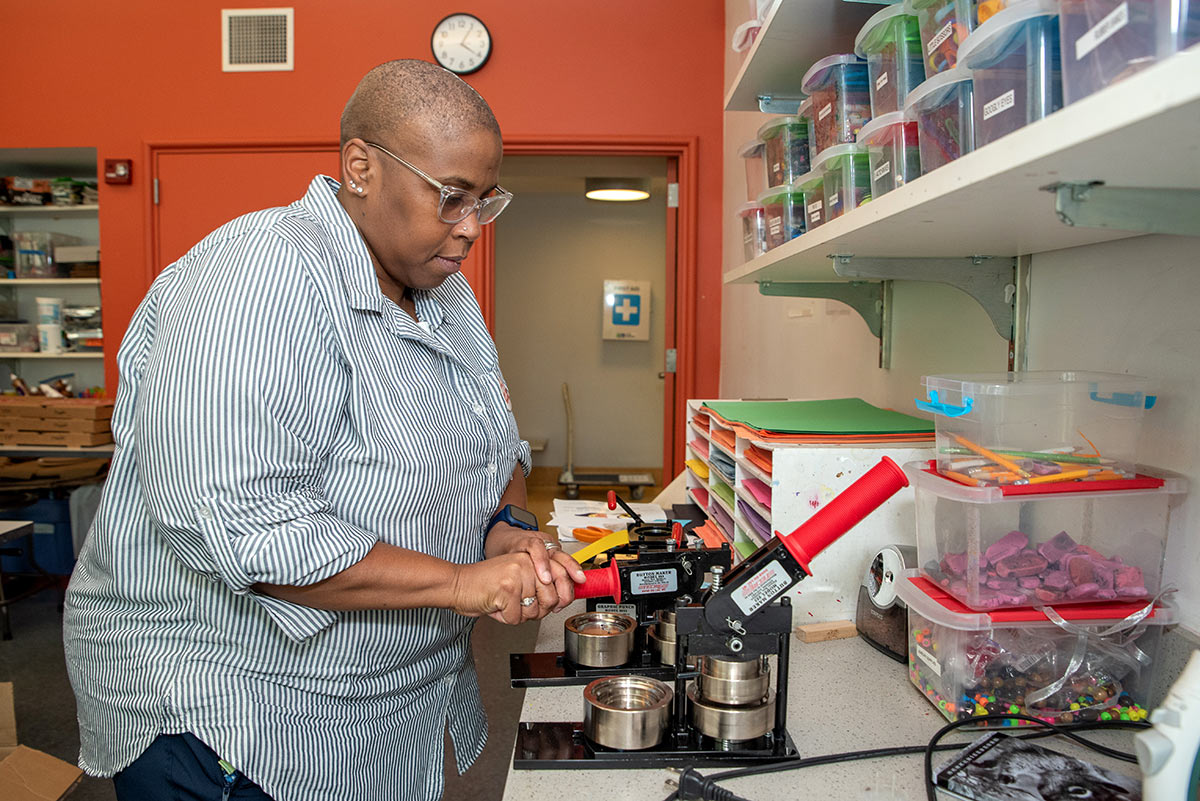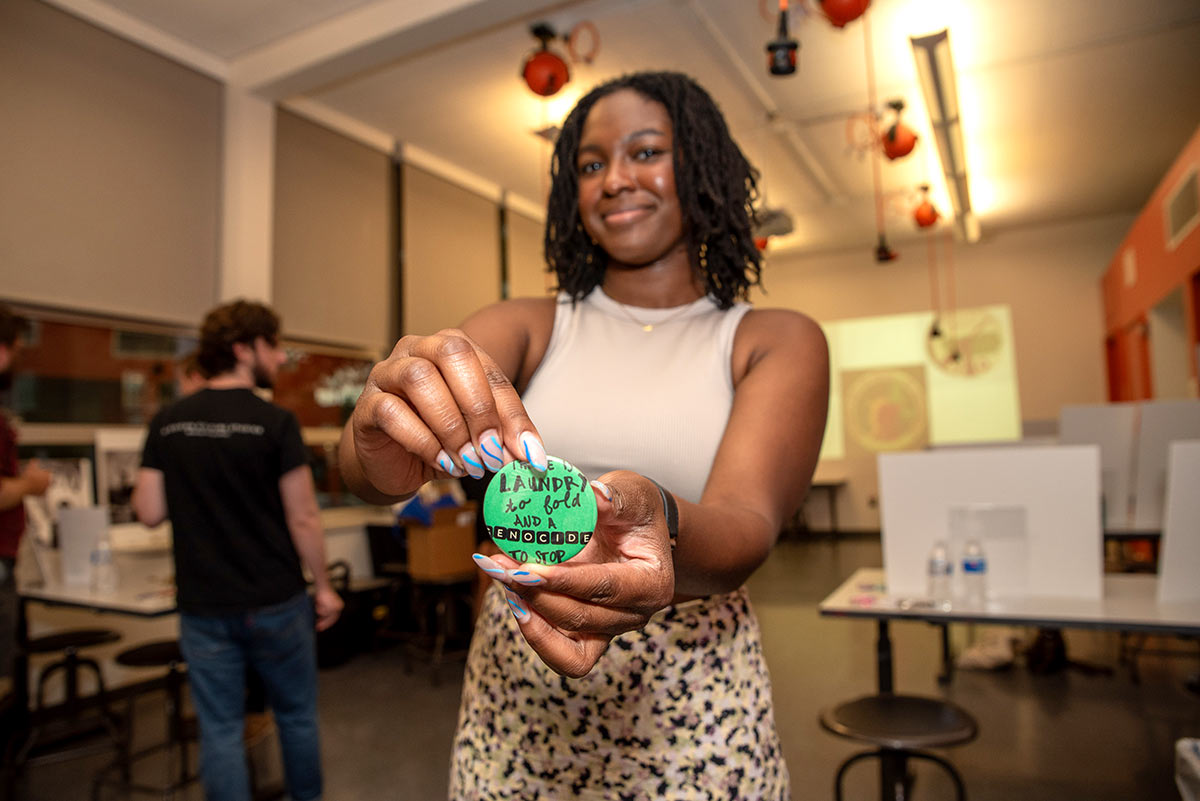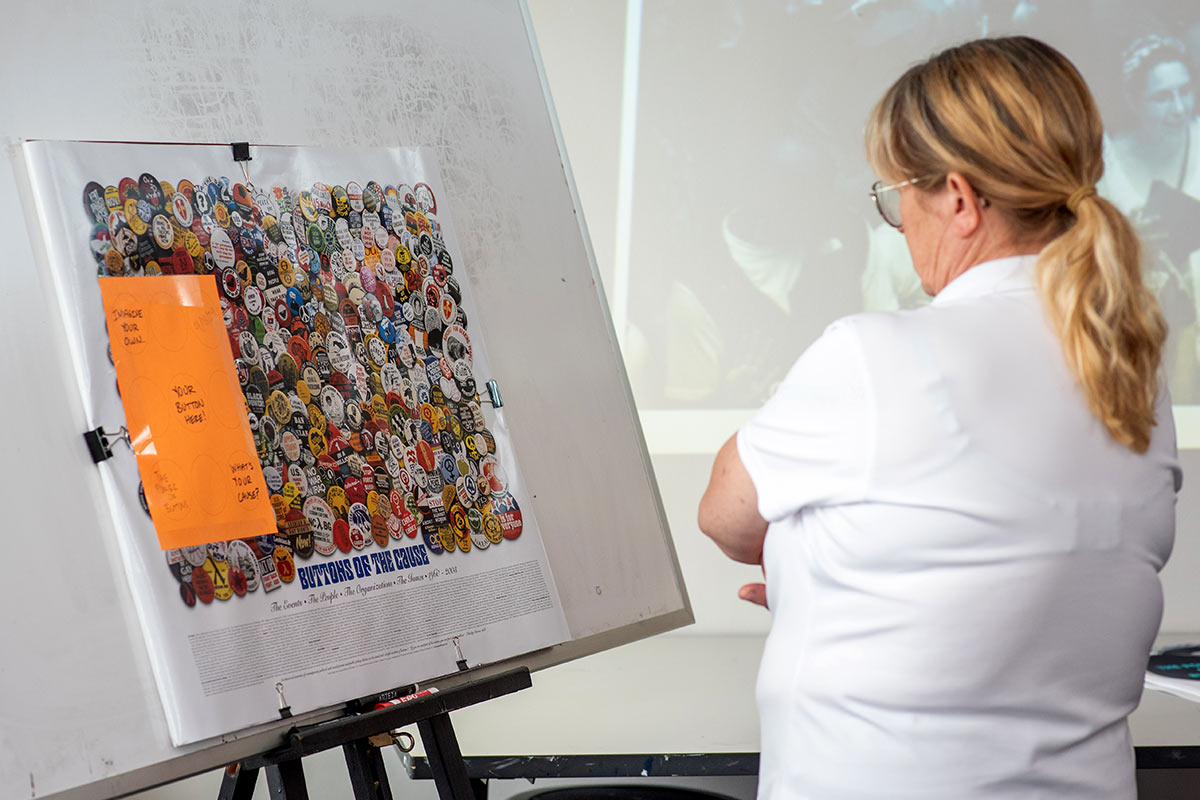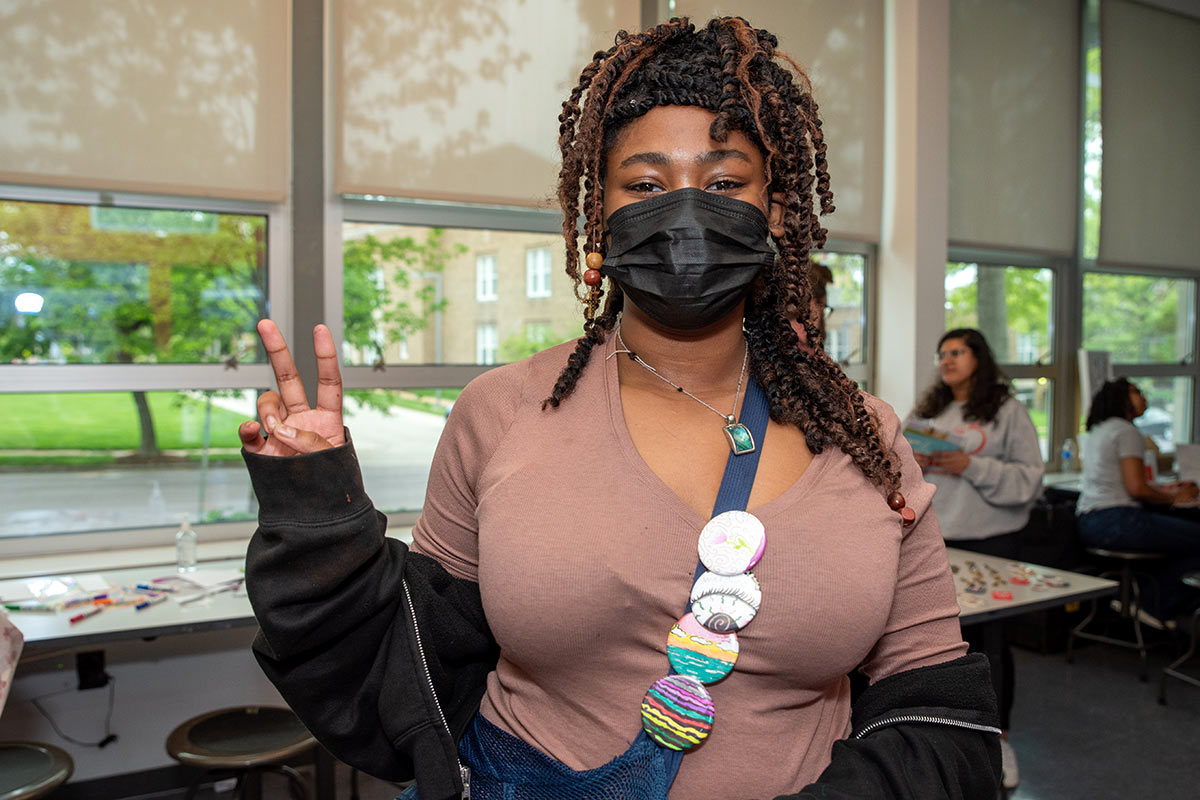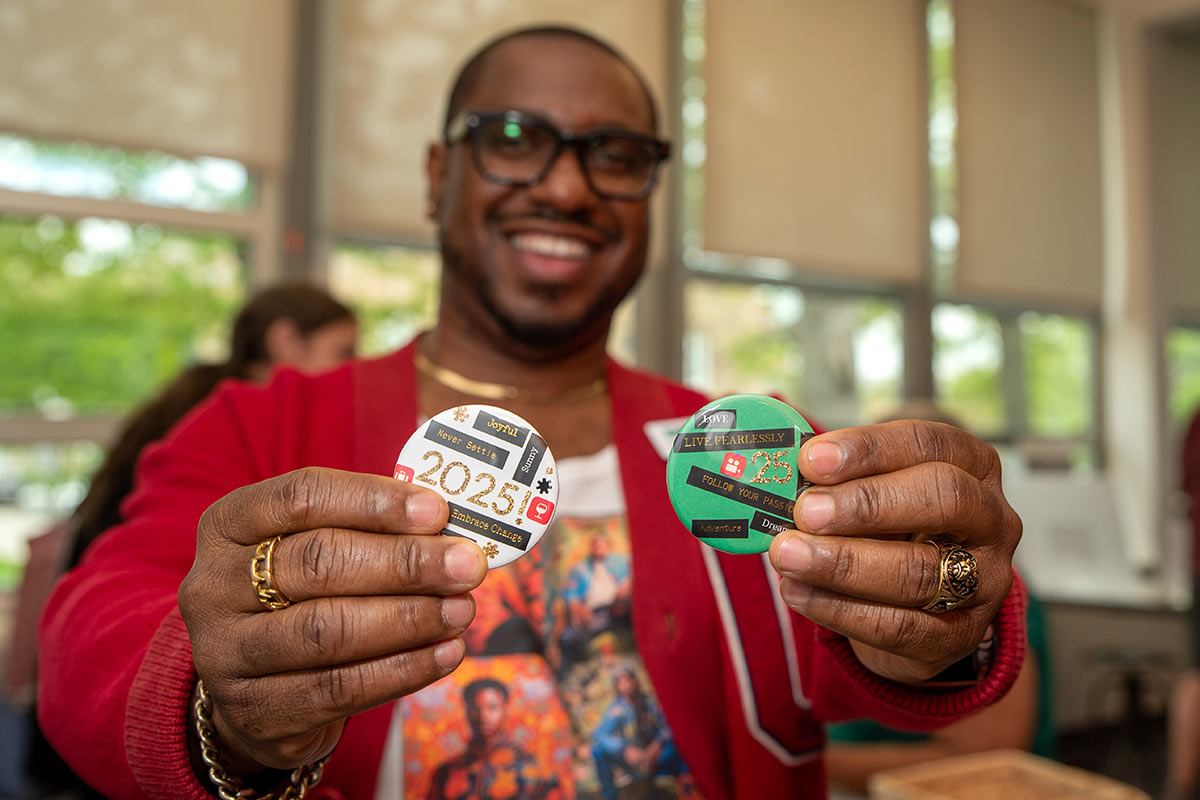page
The Power of Buttons: A Craft Workshop and Public History
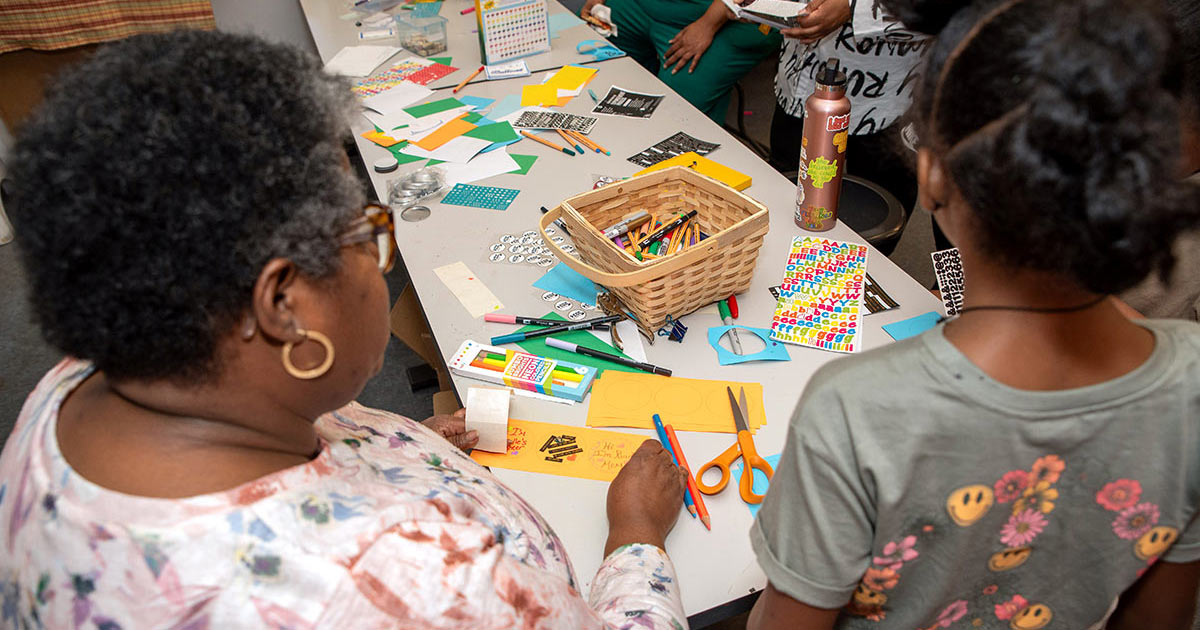
Date: April 18, 2024
Organizers: Center for the Humanities, Washington University in St. Louis; Arts Educator C.J. Mitchell
Being Human Festival (US)
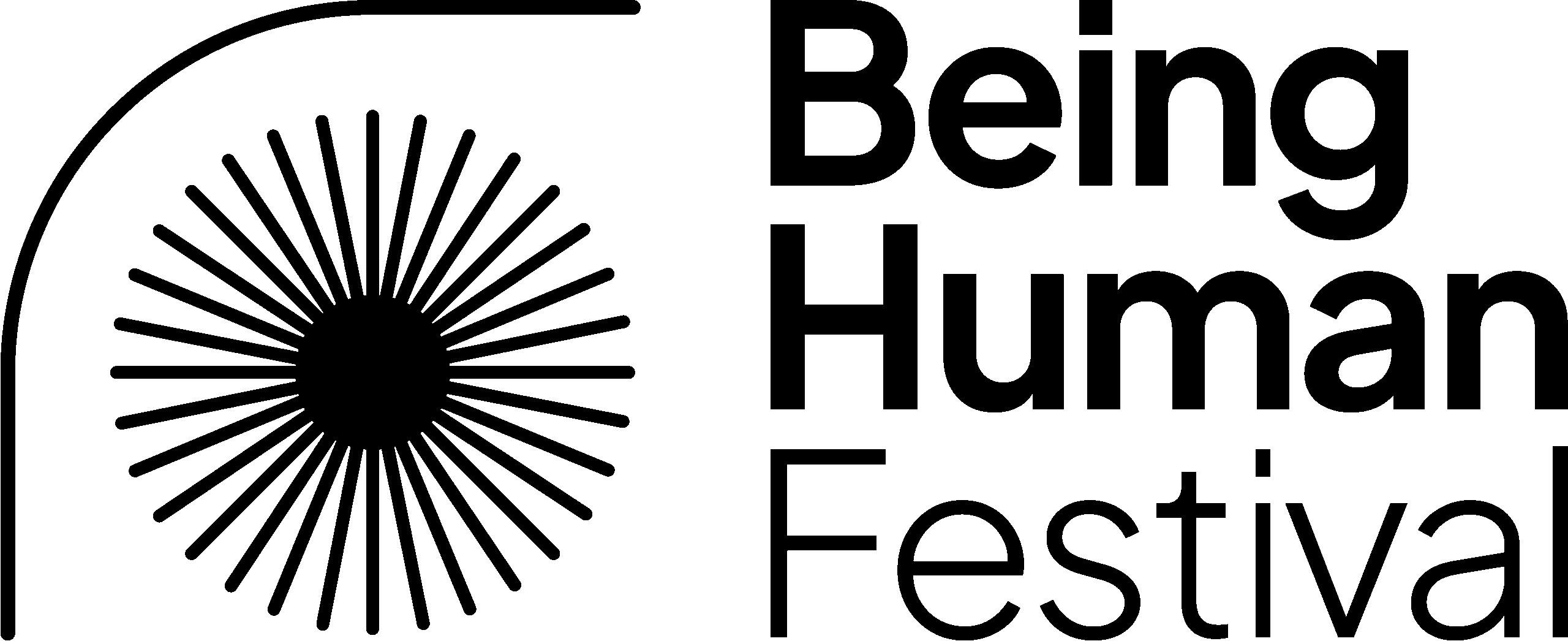
As organizers described, this festival event combined opportunities to connect with local authors, graduate students, and regional nonprofits on the histories of advocacy and the “methods of advocating for various communities.” Each organization had their own table where they “showcased a particular history of advocacy for justice.”
Presenters share more information with participants about local histories of protest and change, trading stories about advocacy in the St. Louis community, then and now. Photographs by Phillip Hamer.
“As one presenter sharing the history of the 1877 St. Louis General Strike noted: ‘Translating my research for the diverse group of participants was simultaneously challenging and rewarding. I learned something from every person who came to my table, whether they were 7 or 67.’”
–Organizer Report
This workshop helped participants consider the significance of buttons as public texts and persuasive tools with discernable histories that involve social movements, civic engagement, and community building.
At each table, participants were prompted to think about how the histories they were learning about intersected with their own struggles for change in their community. Organizers posted signs with broader questions, such as: “What are the causes that matter most to you?” “How might you organize others to join your cause?” and “How can art inspire social change?”
Event participants craft, collage, collaborate on, and share the buttons they’ve made. Photographs by Phillip Hamer.
“Our participation in this [festival] really made it possible for us to design a model of public humanities engagement that we plan to use in the future.”
–Organizer Report
After moving through these tables, learning more about these histories and causes, and having conversations with these specialists, participants made their way to craft tables to produce their own buttons that showcased their own personal interests and causes.
Event organizers grounded this event in history, community, and collaboration. Participants had the opportunity to use the process of button-making to connect the past with the future. Photographs by Phillip Hamer.
“The diversity of our audience made for wonderful conversations between our tables—whose topics ranged from local reproductive justice initiatives, to histories of strikes and demonstrations in the St. Louis area across the nineteenth and twentieth centuries—and our participants, between whom the information sharing was decidedly mutual!”
–Organizer Report
This event was also featured in Washington University in St. Louis’ Center for the Humanities annual report.
